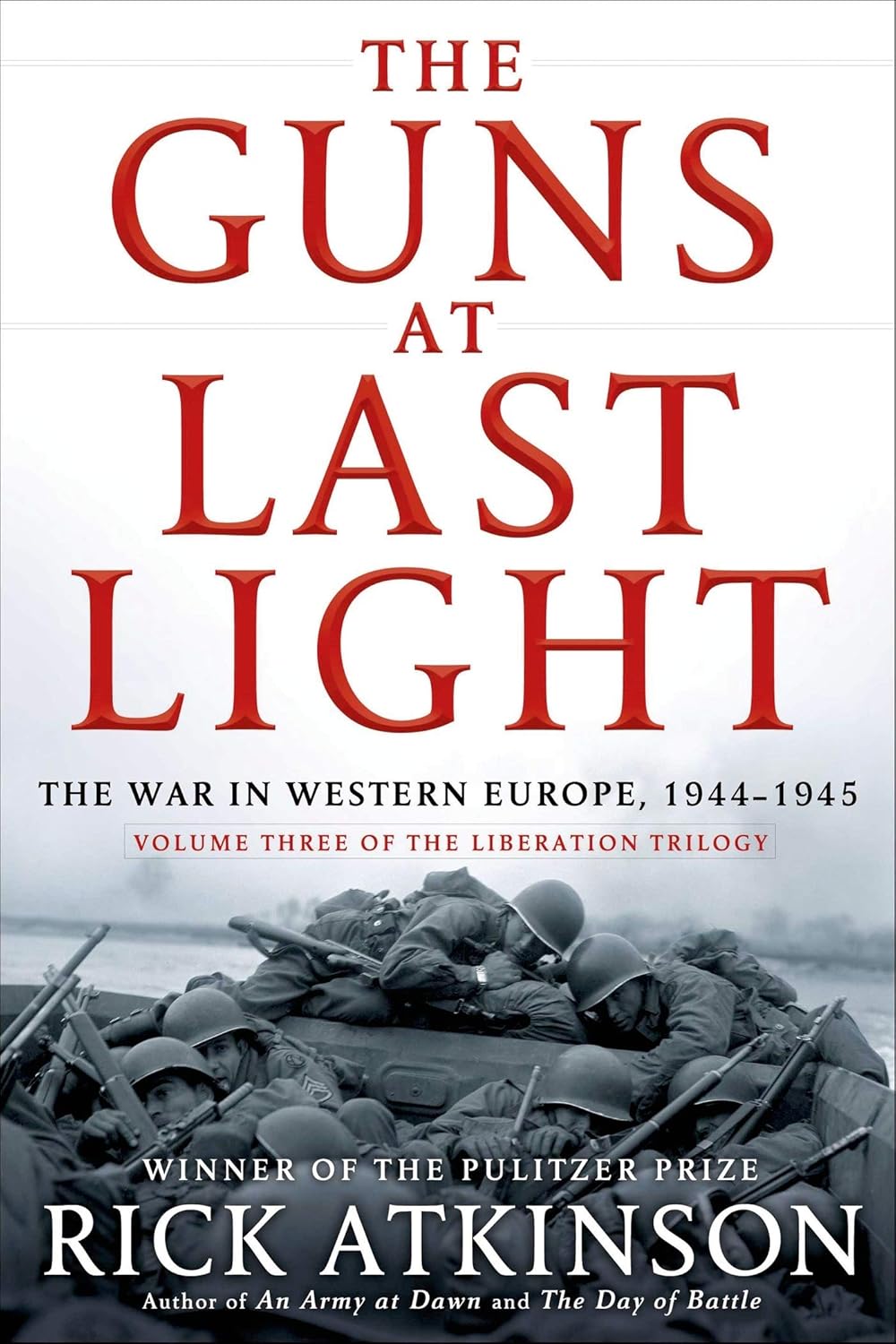You can download it free from Internet Archive, or purchase it on Amazon.com
- Publisher: Henry Holt
- Publication date: 2013
- Language: English
- Print length: 854 pages
- ISBN: 9780805062908
The Hungarian edition was published by Gabo Publishing in 2015 and can be purchased at Libri.
This book is the third volume of the Liberation Trilogy, but it also stands on its own as a compelling read. A substantial work, perfect for summer vacation reading, it carries the subtitle The War in Western Europe, 1944–45 and recounts the Allied struggle to liberate Western Europe, beginning with the Normandy landings.
The author, Rick Atkinson, was born in Munich in 1952, the son of a U.S. Army officer. He grew up in military camps across Europe and North America. Yet instead of enrolling at West Point, young Atkinson chose East Carolina University, where he earned a BA in English, followed by an MA in English language and literature from the University of Chicago. After university, he worked as an investigative journalist for The Morning Sun in Kansas, and later joined The Washington Post.
He is the author of several acclaimed historical works. One of his best-known is The Long Gray Line, a gripping chronicle of West Point’s Class of 1966—many of whom served in Vietnam—offering a nuanced portrayal of the academy that stands in contrast to the earlier John Ford film of the same title.
This sense of drama and finely crafted narrative permeates the Liberation Trilogy as well. The first volume, An Army at Dawn, covers the North African campaign through 1942–43; the second, The Day of Battle, recounts the fighting in Sicily and Italy during 1943–44. That story is not even finished when preparations begin in England for Operation Overlord. On May 15, 1944, senior officers gathered in the austere lecture hall of the old St. Paul’s School to discuss the final blow to be struck against the Third Reich.
Atkinson recounts the events in remarkable detail, shedding light on lesser-known aspects such as logistical nightmares, waste, theft, prostitution, and personal conflicts. He presents the war through a wide range of perspectives—from heads of state and commanding generals to battle-weary lieutenants and terrified teenage foot soldiers.
His character portraits are unflinching: Montgomery is shown as arrogant, conceited, and tactless; Eisenhower as a selfless and exemplary leader; Patton as an aggressive egotist. The book is not an easy read—at times it may feel slow—but once the reader acquires a taste for its tone, the atmosphere becomes almost tangible. You can almost smell the war—and the smells are rarely pleasant.
The book ends with over two hundred pages of notes and sources, a testament to the staggering research behind this truly authoritative historical account. It is absolutely worth reading—and worth remembering the words of Eisenhower’s aide, Harry C. Butcher: “It is much easier to start a war than to finish one.”

